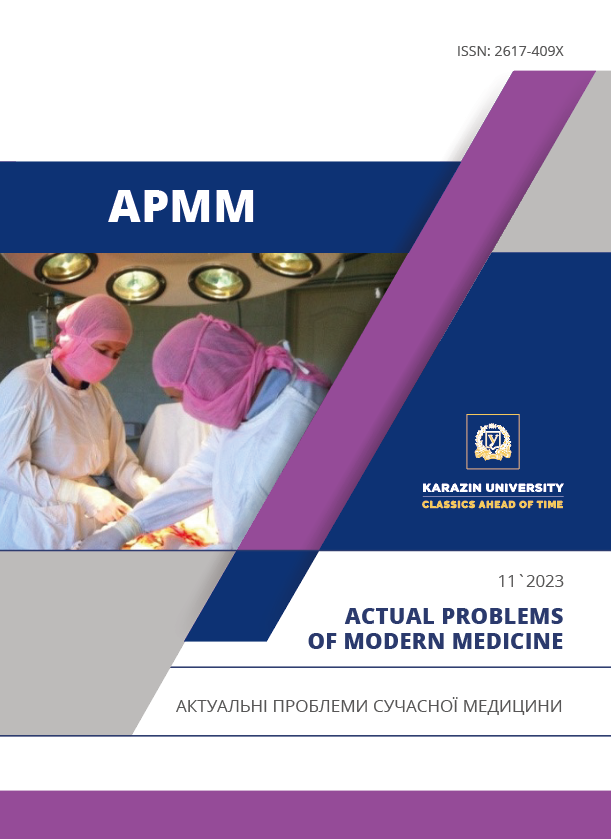The relationship between the character of the course of the disease, the level of tetanus and diphtheria antibodies, and indicators of general immunity in adults with infectious mononucleosis
Abstract
ABSTRACT. EBV infection is one of the most common infections in the world. About 90 % of the world's population is infected with the Epstein-Barr virus. The Epstein-Barr virus is capable of affecting immunocompetent cells, causing lymphadenopathy, hepato- and splenomegaly, being stored forever in the body's lymphocytes, and causing an immunodeficient state. The aim of the study. The purpose of the study was to determine the relationships between the nature of the course of the disease for infectious mononucleosis (IM) in adults, the level of blood antibodies before tetanus and diphtheria, and general immunoreactivity. Materials and methods. In the first series of studies, blood antibodies was studied before diphtheria and tetanus in 79 adults. The control group consisted of 41 people. In the second series of studies, the immune status of 45 adults who became ill with IM was studied: 19 people who did not have a protective level of blood antibodies to diphtheria and tetanus (1st group) at the same time and 26 people (2nd group) who had a protective level of blood antibodies to these infections . In this work, the level of blood antibodies to diphtheria and tetanus toxin was studied by the ELISA method; population and subpopulation composition of blood lymphocytes using monoclonal antibodies: anti-CD3, CD4, CD8, CD22, CD16 (eBioscience, Beckman Coulter, R&D System). The proliferative activity of blood lymphocytes in the reaction of lymphocyte blast transformation was studied and the level of IgA, IgM, IgG in blood serum and the phagocytic activity of leukocytes. The results of the research were processed by the method of variation and correlation statistics using the "Statistica 10.0 for Windows" program. Results. It was established that 34.2% and 54,5 % of adults who developed MI in a moderate form did not have a protective level of blood antibodies for tetanus and diphtheria at the same time. A protective level of blood antibodies simultaneously before diphtheria and tetanus was observed in 55.2% of those who fell ill with IM in a moderate form and in 45,4 % of those who fell ill in a severe form. In persons who had a mild form of IM, the blood antibodies did not drop below the protective level before diphtheria and tetanus.The study of the immune status proved that in adults who do not have a protective level of blood antibodies against diphtheria and tetanus, the level of leukocytes, lymphocytes, CD3+, CD4+ - cells and the blast-transforming ability of T cells, the level of IgA, IgM, IgG, and the phagocytic ability of blood leukocytes are probably lower than in adults who have had an IM and have the protective blood antibodies level before these infections. Conclusions. The lack of a protective level of blood antibodies against diphtheria and tetanus in adults who have had IM is associated with a general low immunoreactivity of the body. A low level of blood antibodies before diphtheria and tetanus in persons who have had IM is closely related to the course of the disease. The lowest level of blood antibodies before these infections was observed in patients who fell ill with a severe form of IM, in patients with a mild form of the disease, significant changes in the level of blood antibodies before diphtheria and tetanus were not observed, as well as in the immune status.
Downloads
References
Balfour HH Jr, Dunmire SK, Hogquist KA. Infectious mononucleosis. Clin Transl Immunology. 2015 Feb 27;4(2):e33. DOI: https://doi.org/10.1038/cti.2015.1
Rostgaard K, Balfour HH Jr, Jarrett R, Erikstrup C, Pedersen O, Ullum H, et al. Primary Epstein-Barr virus infection with and without infectious mononucleosis. PLoS One. 2019 Dec 17;14(12):e0226436. DOI: https://doi.org/10.1371/journal.pone.0226436
Sylvester JE, Buchanan BK, Silva TW. Infectious Mononucleosis: Rapid Evidence Review. Am Fam Physician. 2023 Jan;107(1):71-78.
Shetty K, Bronze MS, Benge E. Epstein-Barr Virus (EBV) Infectious Mononucleosis (Mono) Clinical Presentation. Medscape. 2021. Available from: https://emedicine.medscape.com/article/222040-clinical#showall
Holubovska OA, Andreichyn MV, Shkurba AD. Infektsiini khvoroby. K: VSV «Medytsyna», 2022. 464 s. [in Ukrainian].
Chernyshova LI, Lapii FI, Volokha AP. Imunoprofilaktyka infektsiinykh khvorob: navch. – metod. posib. K: VSV «Medytsyna»; 2018. s. 304. [in Ukrainian].
Vozianova ZhI. Infektsiini i parazytarni khvoroby. Kyiv: Zdorovia; 2001. T.1., 2-e vyd., pererob. i dop. s 884. [in Ukrainian].
Sachs B, Fatangare A, Sickmann A, Glässner A. Lymphocyte transformation test: History and current approaches. Journal of Immunological Methods. 2021;V:493.DOI: https://doi.org/10.1016/j.jim.2021.113036
Paster EU, Ovod VV, Pozur VK, Vykhot NE. Ymmunolohyia: Praktykum. K.: Vyshcha shkola, 1989. s. 274–275. [in Ukrainian].
Nielsen SL, Black FT, Storgaard M, Obel N. Evaluation of a method for measurement of intracellular killing of Staphylococcus aureus in human neutrophil granulocytes. APMIS. 1995 Jun;103(6):460-8. PMID: 7546649




